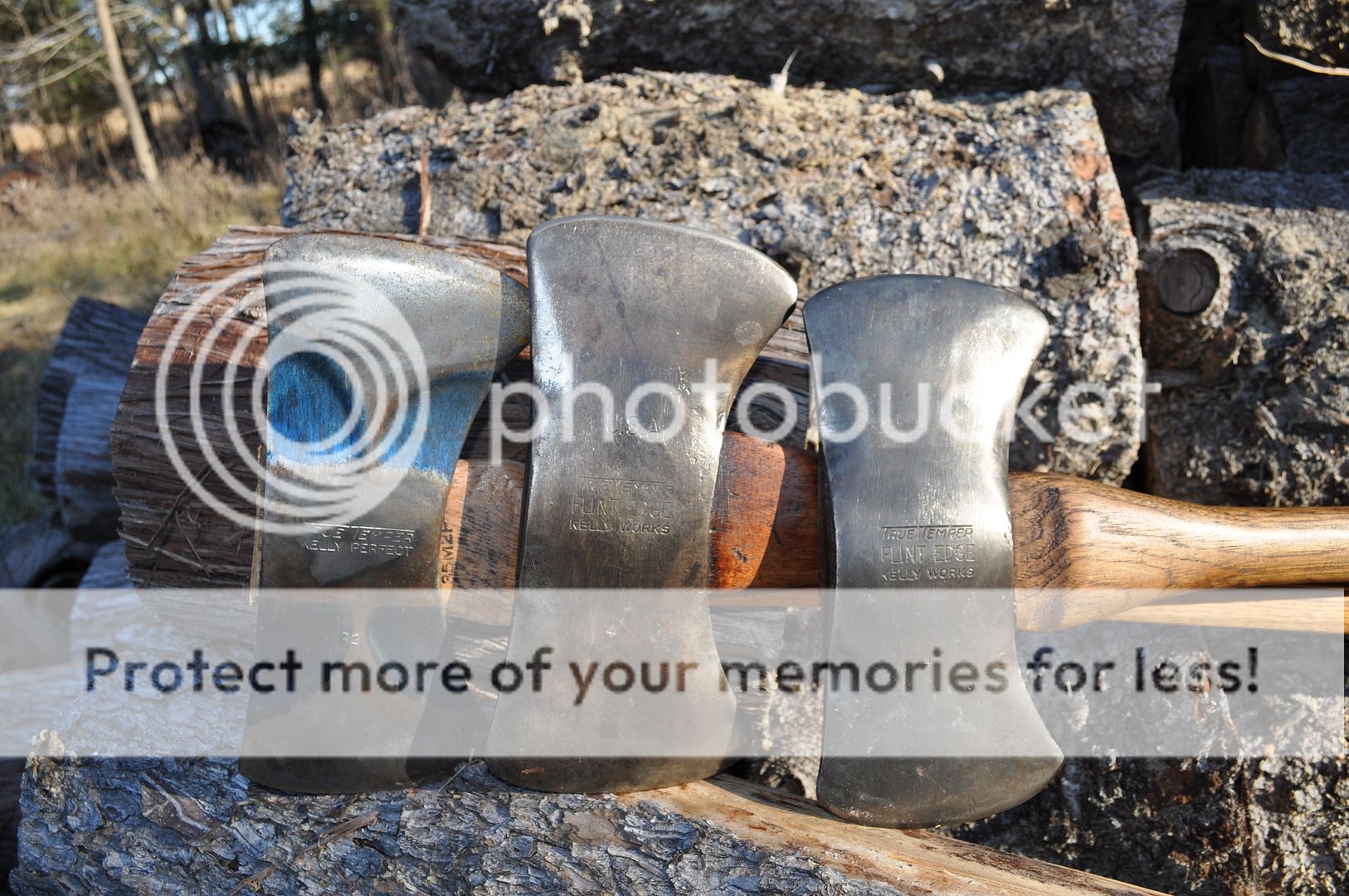- Joined
- Jun 7, 2002
- Messages
- 3,411
broad axe or two-edged cruiser?




The BladeForums.com 2024 Traditional Knife is available! Price is $250 ea (shipped within CONUS).
Order here: https://www.bladeforums.com/help/2024-traditional/





I was led to believe that two man saws made felling axes obsolete already in the late 1800s. Much faster to use and much less waste. The feller-bunchers (huge diesel powered tree harvesting machines) and harvest operations I witnessed in British Columbia 35 years ago didn't even feature axes anywhere except maybe as emergency kit to force a door or window or to untangle things.
For what it's worth, my local loggers supply stocks primarily Council tool Dayton patterns up to 6 pounds with mostly straight handles.
Same with my local loggers supply. I can't imagine swinging one of those 6-pounders for long. I suspect guys just buy them as a macho thing. Or as splitters.
As a side note "cruiser" axes were made for timber cruisers. A cruiser was basically a surveyor who would "cruise" an area of timber and estimate the value. He had to cut through branches and also needed an axe to test trunks for soundness or rot. Since he was hiking through brush most of his day and he didn't need an axe for felling he carried an one with a shorter handle that was easier to carry hence the shorter "cruiser axe". There's a company in Seattle that still makes waxed canvas "cruiser" jackets that wear like armor and are not lightweight or breathable but are just the thing if you spend your day shoving through brush and thorns. After 100 years they're still popular among forestry workers and land surveyors.
edit: Double Ott is spot on with his examples (though he would be hard pressed to locate a redwood or large pine around Puget Sound, might have better luck with a doug fir or cedar.)
There is a fair amount of natural Ponderosa down around Ft. Lewis and redwoods have been planted in many lawns and parks. R.A. Long planted large areas of his tree farm west of Vader to redwood and Port Orford cedar back in the 20's that didn't do too bad. I think it has all been logged now.
